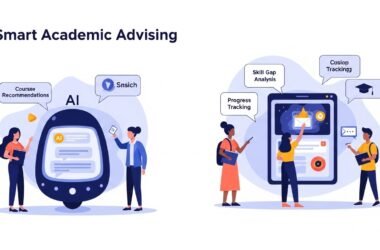Digital transformation is reshaping the way we live, work and learn — yet many education systems remain tethered to traditional assessment methods. Smarter assessments, which leverage technology to deliver more flexible, inclusive and insightful evaluations, have the potential to significantly improve both teaching and learning outcomes. Despite this, schools are still facing major roadblocks when it comes to implementation. So, what exactly is holding them back?
Infrastructure and Compatibility Challenges
A common barrier is limited or inconsistent digital infrastructure. While some schools are well-equipped with high-speed internet and devices, others, particularly in regional or underfunded areas, still struggle with the basics.
The issue goes beyond internet access; legacy IT systems often don’t integrate smoothly with modern assessment platforms. Schools may rely on outdated student management systems or platforms that don’t support interoperability. The result is a fragmented digital environment that adds layers of complexity to even the simplest assessment processes.
A 2024 study published in SpringerLink reinforces these observations, identifying “lack of access to reliable technology and school infrastructure limitations” as core barriers to adopting digital formative assessment practices in secondary schools. The study also highlights teachers’ limited confidence in digital tools and insufficient institutional support as compounding factors.
Security and Integrity Concerns
As testing moves online, concerns around academic integrity, data security and authenticity of student responses come to the forefront. Schools need reliable methods of identity verification, remote proctoring, and real-time monitoring — especially during high-stakes assessments.
Maintaining trust in the results is essential. Without secure systems in place, the risk of cheating or data breaches can overshadow the benefits of going digital. Institutions are rightly cautious, seeking solutions that not only meet technical standards but also offer confidence in the fairness and accuracy of results.
Educator Readiness and Change Management
Teachers play a central role in assessment reform, but many feel underprepared for the shift to digital tools. The transition involves more than learning new software; it requires a rethinking of pedagogy and an understanding of how data can inform practice.
Professional learning in assessment literacy — particularly in the context of newer models like adaptive testing and formative analytics — is often under-resourced or inconsistent. This makes it harder for teachers to align digital assessments with intended learning outcomes, especially those outlined in frameworks which emphasise both depth of knowledge and application.
Fragmented Standards and Unclear Pathways
One of the challenges in adopting smarter assessments is the lack of standardisation. Schools are often left to evaluate a variety of platforms and tools without a clear benchmark for quality, compliance or curriculum alignment.
Even where a national curriculum exists, variations in interpretation and implementation between jurisdictions make it difficult to find universally suitable platforms. This leads to uncertainty and, in many cases, reluctance to invest in long-term solutions.
Budget Pressures and Resource Allocation
Implementing smarter assessments is not just a technology cost — it involves training, support, change management, and, often, new infrastructure. For schools with limited budgets, particularly in public sectors, these investments may not be immediately feasible.
Funding often focuses on visible assets, like laptops or tablets, without accounting for the backend systems or training required to make those tools effective for assessment. This results in underutilised resources and a low return on investment.
A Practical Path Forward
Despite the challenges, a growing number of institutions are making progress by adopting hybrid assessment strategies. These approaches allow schools to blend traditional testing with digital methods, using formative assessments and low-stakes online tasks as a stepping stone toward full-scale implementation.
The key is selecting tools that align with pedagogical goals and curriculum standards, rather than just ticking a technological box. Solutions that are scalable, user-friendly, and secure can help schools gradually build internal capacity while delivering real value for students and staff alike. For schools ready to explore this transition, trusted providers are offering comprehensive online exam solutions that support flexible delivery while meeting the technical and pedagogical demands of modern assessment.
A Necessary Journey
The evolution towards smarter assessments in schools is a complex but necessary journey. While challenges around infrastructure, security, cultural resistance, and funding persist, the potential rewards — more equitable, personalised, and efficient learning experiences — make it an imperative.
By addressing these barriers through careful planning, stakeholder engagement, and strategic investment, schools can position themselves to not only adopt but benefit fully from the next generation of educational assessments.








